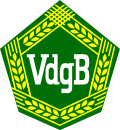20 October 1946 | |||||||||||||||||||||||||||||||||||||||||||||||||||||
| Registered | 11,454,837 | ||||||||||||||||||||||||||||||||||||||||||||||||||||
|---|---|---|---|---|---|---|---|---|---|---|---|---|---|---|---|---|---|---|---|---|---|---|---|---|---|---|---|---|---|---|---|---|---|---|---|---|---|---|---|---|---|---|---|---|---|---|---|---|---|---|---|---|---|
| Turnout | 91.0% | ||||||||||||||||||||||||||||||||||||||||||||||||||||
| |||||||||||||||||||||||||||||||||||||||||||||||||||||
 | |||||||||||||||||||||||||||||||||||||||||||||||||||||

State elections were held in the Soviet occupation zone of Germany on 20 October 1946 to elect the state legislatures of Mecklenburg-Vorpommern, Brandenburg, Saxony, Saxony-Anhalt and Thuringia. They were the only elections held in the future territory of East Germany before the establishment of the German Democratic Republic in 1949, and the only free and fair elections in that part of Germany between 1932 and the Peaceful Revolution.
Contents
- Results
- Overall
- East Berlin
- Brandenburg
- Mecklenburg-Vorpommern
- Saxony
- Saxony-Anhalt
- Thuringia
- See also
- References
The Socialist Unity Party of Germany (SED), which was formed by the forced merger of the Communist Party and the Social Democratic Party in the Soviet occupation zone, became the largest party, but did not achieve an absolute majority in any state. The SED was created in view of the holding of elections in the Soviet zone, as a first step for future political reforms.
In addition to the SED, three other parties participated; the Christian Democratic Union (CDU), the Liberal Democratic Party (LDP) and the Peasants Mutual Aid Association (VdgB). Two other organizations participated but only in Saxony. The SED landslide victory was seen by Soviet authorities as a justification for the development of socialism in their zone. The occupation authorities quickly dropped all pretense of liberal democracy, and cajoled the other parties into forming a "coalition" in which only the SED had any real power. By the time of the elections for a constitutional assembly in 1949, voters only had the option of approving or rejecting a "unity list" put forward by the SED-dominated Democratic Bloc.
The next state elections were held in 1950, after the establishment of the German Democratic Republic.









